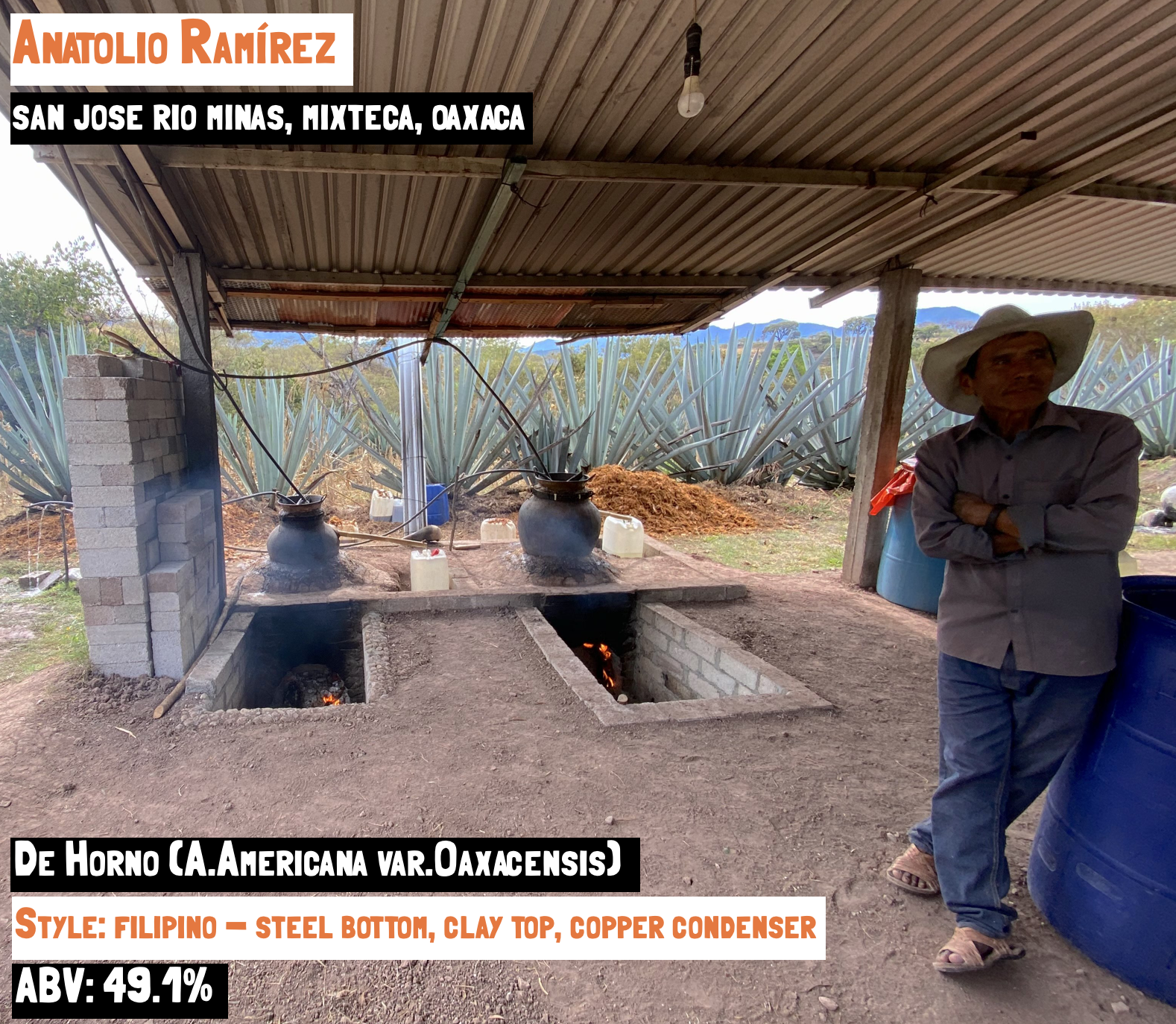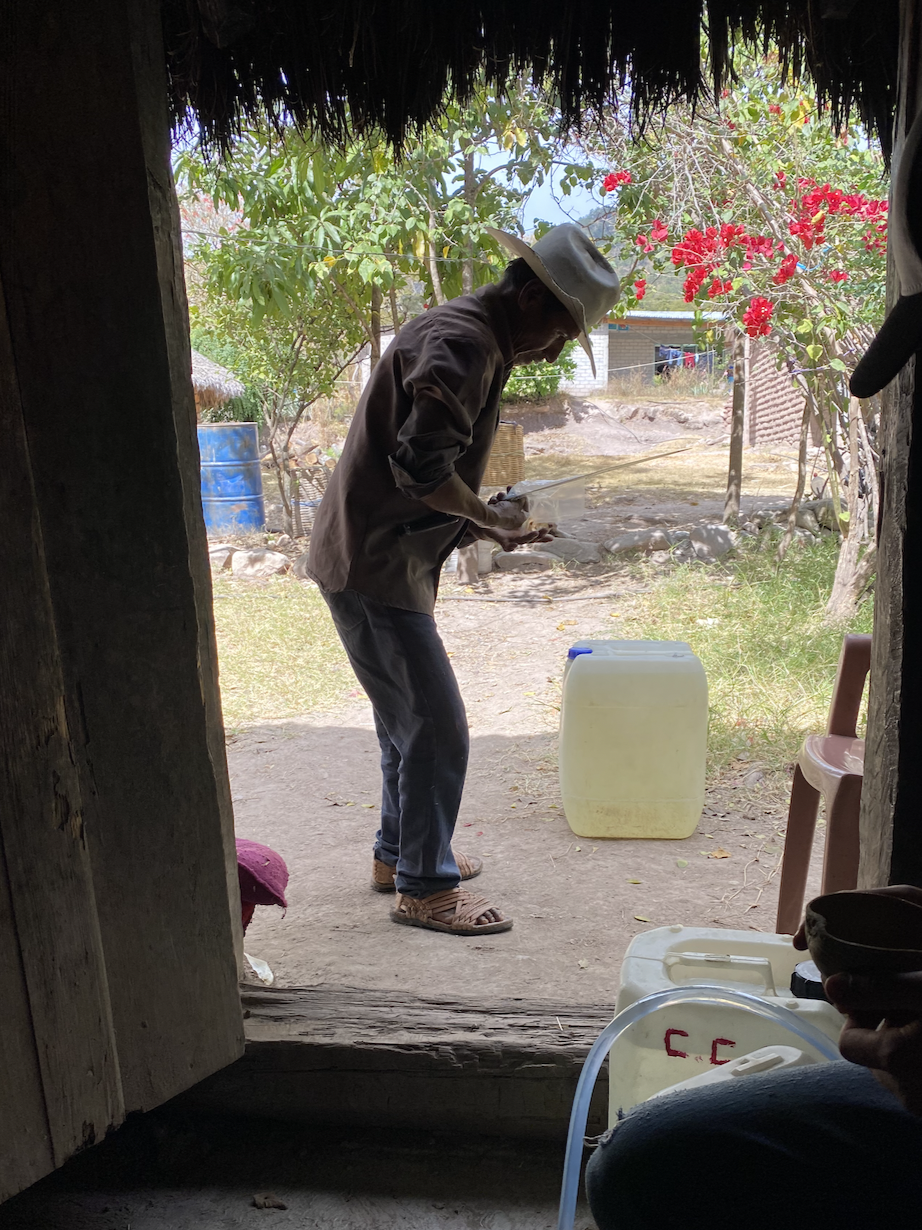De Horno - san jose rio minas
Batch: AR-02
Release date: October 2022

At a glance:
- Maguey: De Horno (A.Americana var.Oaxacensis
- Producer: Anatolio Ramirez
- Region: San Jose Rio Minas, La Mixteca, Oaxaca
- Cooking: Classic in-earth horno
- Milling: Machete & shredder
- Fermentation: Slatter wooden tina
- Distillation: Filipino style with steel boiling chamber, clay top pot and copper condensing lid.
- Composition: Heads, hearts and tails
- Batch size: 400 litres
- Date of production: 2014
- ABV: 49.1%
A long way off the beaten path, in the Mixteca Alta region of western Oaxaca, Anatolio Ramirez and family keep their palenque in the community of San Jose Rio Minas.
We’re please to release this final 40 litres of a batch that’s been resting in Anatolio’s bodega since distillation back in 2014.
Here in the Mixteca Alta, the maguey known in Oaxaca’s central valleys as Arroqueño is colloquially called ‘de horno’ - literally ‘of oven’.
The pencas (leaves) of this agave are so huge that they’re traditionally used to line the barbacoa oven, to protect the meat from scorching in in the fire pit.
This batch makes a fascinating side-by-side with LEJ-04. Same agave, different natural and human terroir.
Given the time that’s passed between distillation and release, technical details on production are a little hazy. But the style of the community remains fundamentally the same, with details in the ‘at a glance’ section above.
-

Internet stock image for scale
-

Traditional barbacoa
-

Agaves in nets, delivered by donkey
Being so remote, hilly, and unpaved, the only way to transport agave into the palenque and mezcal out of it is on the back of a donkey - no heavily loaded trucks around here.
Distillation is filipino style, with two demountable pots and a condensing lid made of copper. Historically both of these pots would been made of clay, but today just the top pot is clay and the boiling chamber is a kind of tall saucepan made out of stainless steel.
Presumably this change was implemented as a matter of practicality as Rio Minas is so remote. Other more famous clay mezcal communities like Santa Catarina Minas can quite readily source a new clay pot if one breaks, but Rio Minas is 5 hrs drive from the city. Distillation is a double pass of this mixed steel, clay, and copper apparatus.
-

-

-

Anatolio walks around his wooden bodega
-

-

-

This was originally a 400 litre batch, distilled in 2014. We unearthed the final 100 litres from the back of the bodega on a visit to Rio Minas in late 2020.
Since then we’ve kept it in glass in our Oaxaca bodega, before finally bottling for this October 2022 release.
Multicolumn
Multicolumn

Gracias Anatolio
House Tasting Notes:
Huele delicioso - smells delicious! Subtle dusty floral tones on the nose, like daisies growing in a dry terracotta pot. Dusty notes continue on the palate, but with a lot of sweetness like smoked maple. Herbal and mildly minty tones creep into the mid-palate before fading to leave a lingering sweetness and a desire for another copita.

This batch is now out of stock, take a look at the full range available here...

Become a member and learn more about mezcal
Where your passion for mezcal transforms into a journey of discovery and delight. As a member, you'll gain exclusive access to curated tastings, educational events, and insider knowledge from industry experts.
Whether you're a seasoned enthusiast or a curious newcomer, our community provides a welcoming space to explore, share, and savour mezcal like never before. Join us and immerse yourself in the art and culture of mezcal, one sip at a time.









